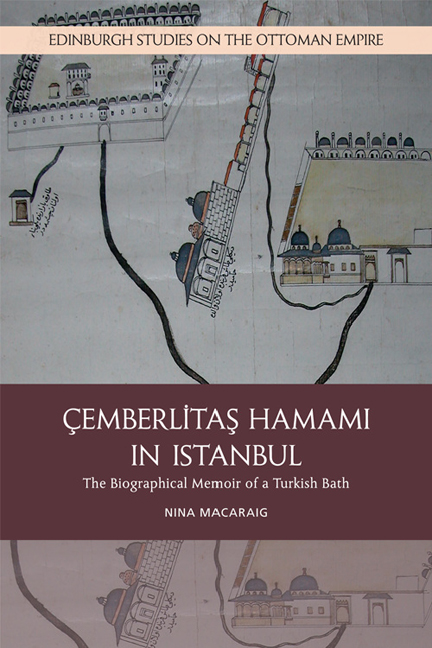Book contents
- Frontmatter
- Contents
- List of Tables
- List of Figures
- Preface
- Acknowledgements
- Note on Transliteration
- Introduction
- 1 Ancestry
- 2 Family
- 3 From Birth to Breadwinner
- 4 Impressions and Identity
- 5 In Sickness and in Health
- 6 Old Age
- 7 Second Spring
- Epilogue
- Appendix: Endowment Deed of the Atik Valide Vakfı (VGM, D. 1766)
- Notes
- References
- Index
Appendix: Endowment Deed of the Atik Valide Vakfı (VGM, D. 1766)
Published online by Cambridge University Press: 28 April 2021
- Frontmatter
- Contents
- List of Tables
- List of Figures
- Preface
- Acknowledgements
- Note on Transliteration
- Introduction
- 1 Ancestry
- 2 Family
- 3 From Birth to Breadwinner
- 4 Impressions and Identity
- 5 In Sickness and in Health
- 6 Old Age
- 7 Second Spring
- Epilogue
- Appendix: Endowment Deed of the Atik Valide Vakfı (VGM, D. 1766)
- Notes
- References
- Index
Summary
The valide sultan wanted to join the blessings of the transitory world with the blessings and the joys of the eternal afterworld, because a wise person would not tie his hopes to the uncertain possessions of the world only. With this in mind, the abovementioned valide opened her generous hand to everybody and wanted to bestow a gift that is always open to the entire public, in order to do good deeds and to escape the sufferings of the terrible day [Day of Last Judgement], when not possessions and children, but only embracing Allah with a clean heart will be beneficial. Accordingly, she allotted from her unencumbered possessions and properties those parts that will be mentioned in detail in this deed of trust. In genuine and sincere determination, devoid of hypocrisy and deceit, with only the purest of intentions, she ordered the construction of many great and magnificent edifices of charity. The following are among these.
1. A high and stately sacred mosque containing all kinds of beauty and architectural embellishment, built in Yeni Mahalle in Üsküdar.
2. Because she assigns much value and importance to the reputation of science and education, and in order to elevate and ennoble the scholars among the people, she built a medrese [theological school] adjacent to the north of the abovementioned mosque's courtyard. This medrese, whose buildings and location are exalted, consists of nineteen rooms. She allotted fifteen of these rooms as residence to students who want to acquire science and education and to sages who want to shape their beings with virtue and beauty, two [of the rooms] to the muid [tutor] employed [there], and the largest one as classroom for the müderris [teacher], and also one of the rooms as residence to the bevvab [doorman] whose duty it is to lock and unlock the door of the medrese. The abovementioned vakıf endowed this medrese to all people of intelligence and seekers of wisdom, who will gain complete insight by making use of primary and secondary sciences, and who will deal with natural and religious sciences.
3. Also in the vicinity of the abovementioned mosque, a mekteb [primary school], which the founder, upon Allah's will, has bequeathed to all Muslim children for the learning and understanding of the Qur’an.
- Type
- Chapter
- Information
- Cemberlitas Hamami in IstanbulThe Biographical Memoir of a Turkish Bath, pp. 248 - 285Publisher: Edinburgh University PressPrint publication year: 2018

